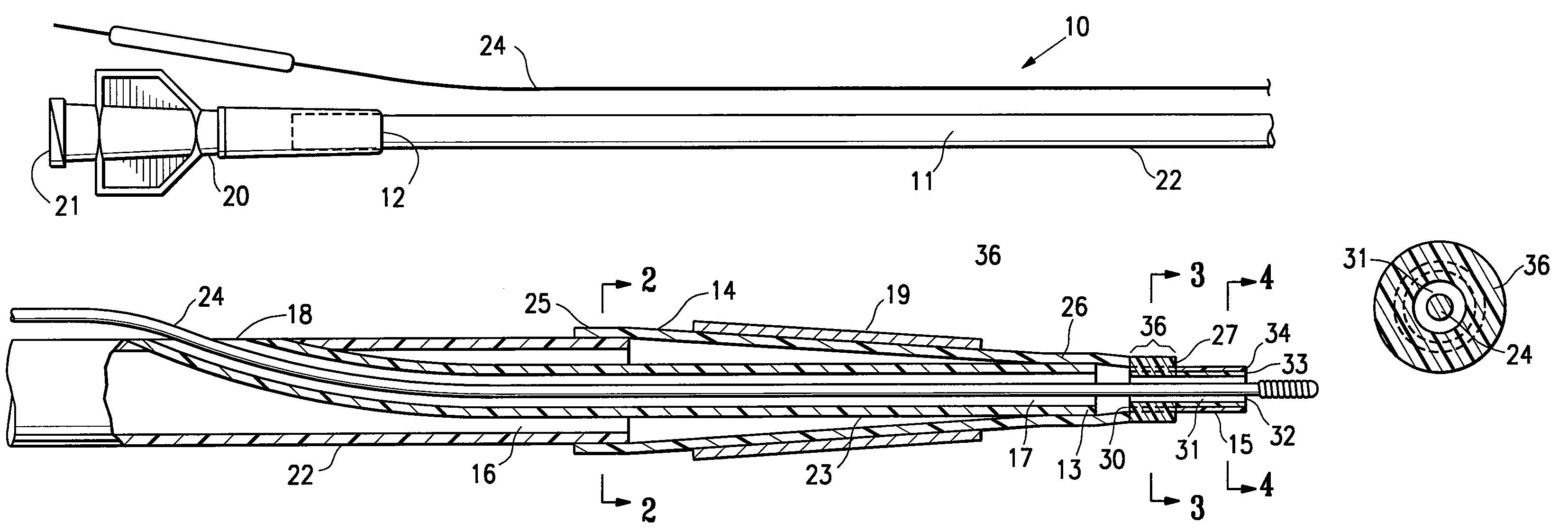Catheter having a readily bondable multilayer soft tip
a multi-layer soft tip and catheter technology, applied in balloon catheters, surgery, coatings, etc., can solve the problems of tearing/damage of the tip and disadvantageously affecting the so as to improve the processability and deliverability of the catheter, improve the integrity of the tip, and improve the effect of the deliveryability
- Summary
- Abstract
- Description
- Claims
- Application Information
AI Technical Summary
Benefits of technology
Problems solved by technology
Method used
Image
Examples
Embodiment Construction
[0019]FIG. 1 illustrates a stent delivery balloon catheter 10 embodying features of the invention, generally comprising an elongated catheter shaft 11 having a proximal end 12 (within a strain relief / proximal adapter), a distal end 13, a proximal shaft section, a distal shaft section, an inflatable balloon 14 on the distal shaft section, and a distal tip 15 at a distal end of the catheter 10. The catheter shaft 11 has an inflation lumen 16 and a guidewire lumen 17. In the illustrated embodiment, the catheter 10 is a rapid exchange-type catheter with the guidewire lumen 17 extending along the distal shaft section to a guidewire proximal port 18 spaced distally from the proximal end 12 of the catheter shaft. At the proximal end 12, the shaft connects to strain relief tubing and a proximal adapter 20. The proximal adapter 20 has a port 21 in fluid communication with the inflation lumen 16 of the catheter shaft 11 and configured for connecting to a fluid source (not shown) for inflating...
PUM
| Property | Measurement | Unit |
|---|---|---|
| flexural modulus | aaaaa | aaaaa |
| total length | aaaaa | aaaaa |
| thickness | aaaaa | aaaaa |
Abstract
Description
Claims
Application Information
 Login to View More
Login to View More - R&D
- Intellectual Property
- Life Sciences
- Materials
- Tech Scout
- Unparalleled Data Quality
- Higher Quality Content
- 60% Fewer Hallucinations
Browse by: Latest US Patents, China's latest patents, Technical Efficacy Thesaurus, Application Domain, Technology Topic, Popular Technical Reports.
© 2025 PatSnap. All rights reserved.Legal|Privacy policy|Modern Slavery Act Transparency Statement|Sitemap|About US| Contact US: help@patsnap.com



